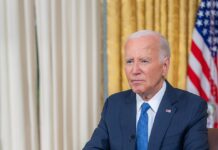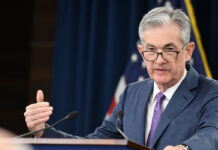In a recent development that has sent ripples through the financial world, Moody’s Investors Service, one of the leading credit rating agencies, has revised its outlook on the United States (US) to negative. Although it might seem ordinary, this decision significantly affects the country’s economic landscape. The United States dollar ($) has had several setbacks since the COVID-19 period. The negative outlook has sparked debates about the factors contributing to this change and what’s the best way forward. In this article, we will explore the reasons behind Moody’s decision and the potential consequences for the US economy.
Moody’s decision to change the US outlook to negative primarily reflects its assessment of the country’s economic and fiscal health. For years, the United States has held a stable outlook, indicating confidence in its ability to meet financial obligations. However, a negative outlook suggests increased uncertainty and risk, prompting investors and policymakers to take a closer look at the underlying issues.
One of the main factors contributing to the negative outlook is the growing concern over the US fiscal policy. The country has been running substantial budget deficits, and the national debt has reached unprecedented levels. Moody’s is signaling that the current trajectory of fiscal policies may pose challenges to the nation’s long-term economic stability.
Moody’s has also cited political gridlock and the difficulty in reaching bipartisan agreements as a factor in its decision. The inability to address crucial economic issues, for example, infrastructure investment, tax reform, and the debt ceiling, raises questions about the government’s ability to navigate and respond effectively to economic challenges.
The interconnected nature of the global economy means that events and developments outside the United States can substantially impact its economic outlook. Trade tensions, geopolitical uncertainties, and the aftermath of the COVID-19 pandemic contribute to the overall global economic uncertainty that has influenced Moody’s decision.
A negative outlook could lead to an increase in interest rates as investors demand higher returns to compensate for increased risk. In retrospect, this could affect borrowing costs for the government, businesses, and consumers, potentially slowing down economic growth.
Moody’s decision might erode investor confidence in the US economy. Foreign investors, in particular, may reassess their investment strategies, leading to capital outflows and putting pressure on the value of the US dollar.
The negative outlook may prompt policymakers to reassess fiscal and monetary policies. It could act as a wake-up call, encouraging lawmakers to address structural economic issues and work towards bipartisan solutions to ensure long-term financial stability.
Moody’s decision to change the US outlook to negative is a significant development that warrants careful consideration. While it serves as a warning about the economic challenges, it also allows policymakers to address these issues head-on. The path forward will require concerted efforts to navigate the complexities of fiscal policy, overcome political gridlock, and adapt to a rapidly changing global economic landscape. Only time will tell how the United States government will respond to restore its economic dominance.












